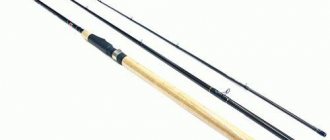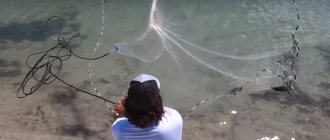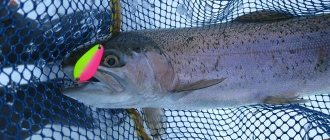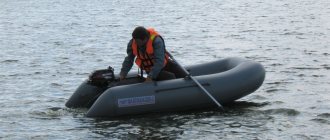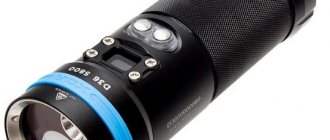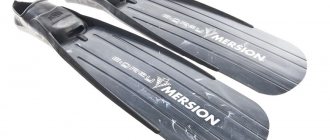Bite alarms are a real carp fishing float, which is responsible for indicating a bite and makes the only noise that brings joy to our hearts rather than irritation. The meaning of the alarm for carp fishing is that the fishing line is placed in a special roller. When a fish bites, the line begins to slide along the roller, causing it to spin, and from this rotation the alarm emits a sound signal. The faster the rotation, the more often the siren sounds. That’s why the term “locomotive” appeared - when the fishing line quickly runs along the roller and it squeals incessantly. The exception is Delkim signaling devices. All Delkim bite alarms are equipped with a piezo sensor, which proportionally determines both the linear movement of the fishing line and the vibration of the rod tip and its equipment, which are not always associated with the movement of the fishing line. A similar system is installed in Gardner Silent Alarm. This is generally a silent alarm, which itself only has a color indication. When a pager is connected, the sound will only go to the pager. This is a special series for athletes, since they often turn off the sound of the alarms.
The electronic alarm is usually powered by a battery, usually a crown, AA or AAA, depending on the specific model. It has the ability to adjust the signal volume, and on advanced versions even the pitch and sensitivity. This is done so that by the sound you can determine which rod you need to hook. This is especially true in the dark.
However, one electronic alarm will not be enough. The fact is that the electronic alarm itself works well if the fish pulls the line from the shore, thereby giving it tension. If the carp bites towards the shore, then the line will sag and will not put any pressure on the roller at all. Accordingly, he will remain silent. It is for such situations that mechanical alarms are used in combination with electronic ones. They are also convenient for adjusting the tension of the fishing line. Mechanical alarms are a real weight that hangs on a fishing line. At one end you get a sinker that you throw into the water, and at the other end there is a mechanical alarm. By winding the fishing line with a reel, you tighten the tackle; by releasing the fishing line, you loosen it. We will talk about the tension of the fishing line and how it affects the bite later.
Electronic signaling devices have a standard thread that fits any rack. For greater convenience, so as not to screw every time, you can purchase a special quick release. This is a two-part piece. You screw one into the rack, the other attaches to the alarm. And then you simply insert the one with the signaling device into the one that is screwed into the rack.
The mechanical signaling device is equipped with a special insert through which the electronic thread passes. You put the mechanical alarm on the thread of the electronic one, and screw the latter into the rack. Thus pressing the fasteners of the mechanical signaling device. It needs to be positioned so that it is parallel to the rod. After you have cast and placed the rod on the electronic indicator, you attach the mechanical one to the fishing line and begin to adjust the tension. After completely setting up the gear, turn on the electronic alarm. This will help you avoid unnecessary "peaks" that are completely useless. According to the unspoken etiquette of carp fishing, only the fish can make the alarms squeak, but not the angler.

Therefore, if you need to recast, turn off the alarms, and only then raise the rod. Of course, if there was a bite, we turn off the alarm before we put the rods back on the racks.
Pager. An excellent invention in which you can completely turn off the sound on the alarms and be guided only by the sound of the pager. Picks up a signal at a distance (on average about 100 meters, it all depends on the model). After simple manipulations, you connect the alarms to the pager and that’s it - you can sit quietly even in a closed tent, wait out the bad weather and drink hot tea. You also don’t have to worry that you won’t hear the alarms in your sleep – a pager is the best alarm clock, believe us!
How many alarms will I need?
Each working rod is a set of electronic and mechanical signaling devices. We strongly recommend that you don't try to get by with just one thing. We hope that we are writing this in vain and no one will think of fishing only with an electronic or only a mechanical one, but just in case - if you put only an electronic one, then when you bite “on the bank”, you can forget about the signal and timely hooking. It simply won’t be there - the line will weaken, fall through and you will have to first reel in the slack and only then hook it. By this time, the fish will probably have gone into cover and a break will occur. If you install only a mechanical alarm, then you will have to turn into an owl for three days and stare at the fishing rods without stopping.
Types of bite alarms
Buy bite alarms... Somehow we never even thought about this before. We did everything with our own hands. Signalers indicating the bite of a fish have been used, probably, since the time when the crude primitive fishing rod was invented. And one of the simplest yet effective signaling devices is a float. A great variety of them have now been invented and are functioning: from a piece of pine bark or sedge to match floats of “wagglers” almost half a meter in size and similar to an arrow from a crossbow.
But still, the main users of bite alarms are, of course, bottom hunters, whose group includes anglers with a feeder. And here you can recall a variety of modifications of bite alarms.

Let's start with an ordinary fishing rod, on the flexible tip of which a small ringing bell is attached.
This is a very simple donka, which was and is the most effective in the spring for catching large roach, which rises to the upper reaches of the Volga tributaries to spawn. The actual bite alarm is the flexible tip of the fishing rod, which resembles the well-known quivertip of the feeder. And the bell can be called a sound addition to the visual signaling device at the top.
Bells are the best bite alarms, of course. They are still used no less successfully in such famous gear as the zakidushka. This is the oldest of the donoks and no less effective. How many large fish were caught with zakidushki, especially during night fishing for burbot and catfish. The success of bells in bottom fishing is primarily due to the fact that they, in fact, represent the simplest and most effective symbiosis of a visual and audible signaling device. The swinging of a shiny bell on a fishing line gives a signal about a bite, and for a fisherman who has dozed off or has been away from the gear, the sound signal is sometimes a sharp, sometimes melodious, but always bewitching ringing of a bell. The ancient bells, cast according to the canons of church bells from alloys of tin and copper, were distinguished by their crimson ringing. Despite the absence of silver in the bell alloy, these bells and bells produced precisely silver ringing. And the real night miners knew by the sound where the ringing was coming from and what bait the burbot had taken. Selecting bells of different sounds, they unmistakably went to one or another gear. Now that mysterious and beautiful fishing no longer exists, since its romantics and lyricists are gradually dying out. And the bells lost their crimson ringing. Except that the brass homemade products of older craftsmen are still somewhat reminiscent of the bells of bygone years. And Chinese fakes do not sound at all, despite their appearance, sometimes reminiscent of old forms of bells.
Prices for alarms
Electronic signaling devices. So, alarms, like fishing rods, are divided into three budget segments. Budget models are, as a rule, the simplest alarms, in which there is only one setting - the volume of the signal. Sometimes you can’t even connect a pager to them. But they are really inexpensive. The best option for beginners is definitely FOX Micron M+. It is quite inexpensive, yet it is completely sealed and can withstand any rain or cold. These are our very first alarms, for which we have already caught so much that we would never sell them. You can’t get much money for them, but they are dear to us, like a memory. If you want to connect to a pager, then there is the FOX Micron MX+ model. Here the alarm is already available. It is also possible to adjust the pitch. In the M+ series - only volume. The MX+ series has an additional feature - pitch adjustments, however, there is also no pager.
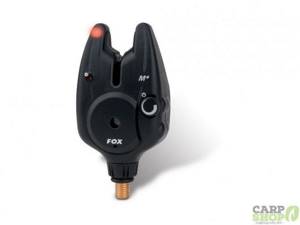
More expensive versions (NTXr, NXr) already allow you to configure the alarm, like a musical instrument - pitch, sensitivity. For example, in strong winds, you can turn down the last setting so as not to be distracted by gusts of wind. In calm weather, set it to maximum and even millimeter bites will be heard. However, a little lower we will tell you how to set up the tackle correctly, so that even in a strong wind you do not disturb the pond with unnecessary sounds and not test your nerves. Learn to fish so that each “peak” means a bite from the fish, not the wind.
When talking about top-end alarms, one cannot fail to mention Delkim. By the way, these are the very first alarms, which were invented in the mid-70s by two carp fishermen - Del Romang and Kim Donalds. Surprisingly, during all this time the design of the signaling devices has not changed at all and is already a calling card. As the creators themselves wittily say: “We just did everything right right away!” Delkim also has three series of alarms that cater to different budget segments.
One of the latest innovations that the carp equipment market offers is the FOX RX+ alarms. They replaced the top-of-the-line NTXr+ and introduced the world to a much wider range of capabilities. Incredible sensitivity, which literally reacts to the movement of the fishing line in a matter of millimeters, while you can also set a much less sensitive mode. The pager has a “night mode” that will respond to all bites, but will not disturb the angler’s sleep over trifles.
Mechanical alarms. Everything is simple here. The world of mechanical signaling devices has changed since the release of the FOX Black Label Bobin. This series is a real constructor that allows you to instantly adapt to wind, zig-rig, long and short fishing distances without any extra effort. Read the full review here. We talk in detail about the advantages of this series and the rules for using all components.
Subsequently, FOX introduced an updated line of mechanical alarms, adding the Dumpy Bobbin and Stealth Bobbin models. We also wrote a long and detailed review about them.
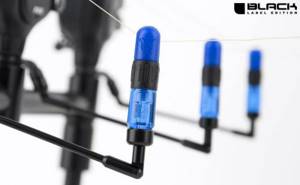
In general, mechanical alarms are divided into “swingers” and “bats”. Bats are two balls, between which a fishing line with a chain clings. Swingers are a metal leg and a special lock that hangs on a fishing line. Bats are more delicate, but are subject to strong fluctuations during the wind. Swingers are heavier and put more tension on the line. Therefore, previously it was necessary to have both types of alarms in the arsenal in order to adjust the gear to certain conditions at the right time. With the release of Black Label this went away.
Advantages and disadvantages of electronic signaling devices
Electronic bite alarms for the feeder are an invaluable find for all fans and true masters of such a popular type of fishing. With their help, the chances of catching real trophies increase significantly, because... the fisherman is always aware of the activity of the fish at the hook and does not miss a single bite, even if it is the most cautious. Moreover, most alarms are equipped with a board that can recognize wave strength, current and false bites.
If we talk about the advantages and disadvantages of electronic signaling devices, then we should take into account proven models from well-known manufacturers. Cheap Chinese analogues rarely demonstrate high quality of work and reliability.
So, the advantages of feeder alarms include:
- High sensitivity.
- Minimum number of false positives.
- The ability to cut off vibrations of the fishing line during waves, wind, strong currents or rolling loads down a slope.
- When fishing with several rods, you can accurately determine where the signal sounded.
The only disadvantages include the high cost and the need for installation on special rod pods, which is expensive. However, traditional feeders continue to mount them on racks; however, for proper operation, at least two racks should be used per rod.
Electronic fishing alarms are suitable for avid feeder fishermen, and models with a pager are suitable for carp anglers, because... they allow you to thoroughly feed the fishing point, and then go to the tent to rest. It is important to understand that the behavior of carp can be unpredictable and you need to be especially careful, because sometimes only 2-3 serious bites happen during the night.
Selection of alarms
Of course, first of all, you should start from your budget. The best option is to buy alarms as a set. This way they will be much cheaper than purchasing four alarms and a separate pager separately. Currently, in stores you can always purchase “3+1” (3 alarms and 1 pager) or “4+1” (4 alarms and 1 pager) sets. All sets are supplied in protective cases, which is also a big plus - it’s convenient to store them after fishing.
The same applies to mechanical alarms, although they are much cheaper than electronic ones, and this is quite logical.
Based on companies, for beginners we would recommend the FOX M+ or FOX MX+ series. You can save a lot on a pager, but if you can buy one, that’s great. The choice between the top series FOX or Delkim is a matter for every angler. We have used both and can confidently say that these are products of the highest quality, which, in principle, forever solve the problem of choosing alarms.
Portable electronic alarms
Although portable devices have limited functionality, they are very inexpensive and take up little space on the form. If you're a fan of night fishing, check out an affordable model called Strike Alert. There are special grooves on the body of such a device, with the help of which the alarm can be attached to the tip of the fishing rod without much effort.
In working condition, such a tool lights up green, and when the fish is on the hook, the color turns red. The determination occurs by vibration of the form, which is provided by an electronic board, which, in addition to all this, also ignores the influence of waves or wind. However, with intense wind, the probability of false alarms is still present.
An equally popular model is the Russian Soyka 3. It is used for fishing both day and night. The device has 5 sensitivity levels. If we are talking about fishing in still water, then you can use the most sensitive levels, and in the current or in the presence of wind, 2 and 3. In addition, in this alarm you can control the volume of the sound alert and tone. Such configurations are selected with one button. If you press it, the alarm will automatically turn on. Pressing again will turn it off.
If you hold down the button, you can hear characteristic signals (peaks). To set the fourth sensitivity level, just release the button after the fifth signal a. The melody can be changed on the seventh , eighth and ninth signal.
To disable the automatic turn off of the signal when making sweeps, wait until the 10th signal. To change the key, you need to hold down the button and wait 20 seconds, after which the model will start playing different melodies. To confirm your choice, you need to release the button and the model will remember the selected mode.
How to configure alarms correctly?
The logic is as follows. The further the fishing distance, the stronger the line tension. The closer the fishing distance, the weaker the line tension. When fishing with a zig-rig, a strong line tension is required.

In general, regarding the dependence of line tension (setting up alarms), there is a wonderful guide from Rob Hughes, which has been tested for years, and from which you can safely build on.
- Fishing near the shore, at any depth - low tension
- Fishing at medium distance (up to 60m-90m), at any depth - medium tension
- Long-distance fishing, as well as fishing at any distance with obstacles (grass, algae) - strong tension
Below are pictures, from left to right: medium and high tension. The pictures are guidelines rather than strict illustrations. There is no need to measure the height of the signaling devices on them down to the centimeter. This is rather just a demonstration so that you have something to start from. With a weak tension, the mechanical signaling devices are strongly lowered down to the ground.
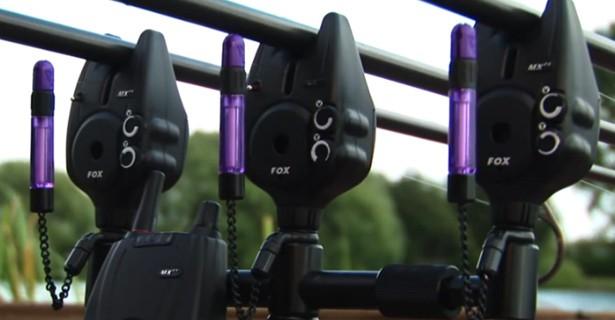
Why do you need to vary the line tension? If you are fishing at a long distance, then slack line can prevent the alarm from detecting a bite, since it neutralizes the movement of the line. Roughly speaking, not the whole line will move, but only some part of it. When fishing close, on a shorter piece of fishing line, medium tension is quite enough. Moreover, near the shore, a fishing line stretched like a string will scare away the fish.
Visual bite alarms
A visual bite indicator on the feeder provides control through the angler’s visual perception of distinct movements of the device associated with the cord or tackle form. The group of visual signaling devices is considered the most extensive of the areas of this equipment element. It includes quivertypes, light bite controllers, called fireflies in the fishing community, swingers, side nods and floats. All these devices are versatile and easy to use, suitable for almost all types of feeder gear.
Factory-made products are low in cost, and if desired, they are quite easy to make yourself from scrap materials at home, and some options are even right on the shore of a reservoir while fishing. This type is suitable for use during daylight hours, and with simple manipulations and modifications to the design it can also provide night fishing. Continuing the article, we will look at the main types of visual controllers, dwelling in more detail on their descriptions and principles of operation in feeder fishing conditions.
Firefly
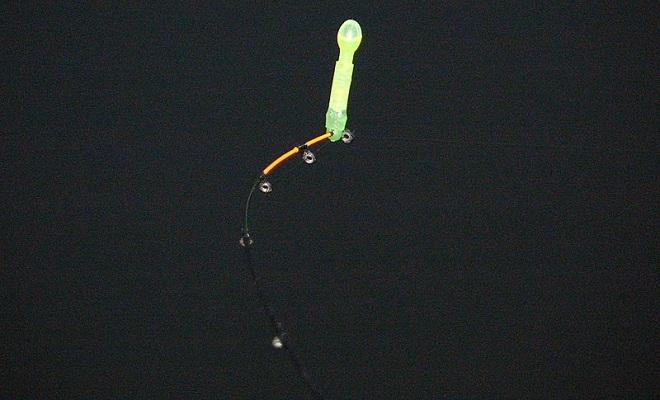
Light signaling devices are specifically intended for fishing trips organized at night. The principle of operation of firefly controllers is based on the chemical reactions of a pair of substances, which, when mixed, fluoresce for 12–20 hours. The compositions are in sealed tubes in different compartments. Deformation of the tube by elementary compression destroys the partition, mixing the liquids and thus catalyzing the reaction causing the glow. Complete with a capsule charged with solutions, the manufacturer offers a soft polymer tube designed for attaching the device to the quiver tip of the tackle.
The firefly is attached to the end of the fishing rod, the movements of which are observed, reacting to the intensity of the twitching of the light point under the influence of the fish taking the bait. In addition to the fastening tube, you can use adhesive tape, tape or electrical tape to mount the firefly on equipment elements that can show a bite. Fireflies are an effective and inexpensive means of night-time visual signaling.
DIY bite alarm for feeder

Foil tubes, although primitive in nature, are quite effective in practical use. This type of controller can be quickly assembled in the field from a minimum of materials in the shortest possible time. To make the device, you need a piece of foil paper, which can be removed from a cigarette pack and subsequently rolled into a tube. The prepared bite alarm for the feeder is attached with your own hands to a slightly sagging cord of the tackle, which straightens when bitten, changing the initial position of the foil tube, thus notifying about the bite.
In addition to visualization, foil can create rustling sounds, and at night, when illuminated by a flashlight, produce glare. The disadvantage of the controller is its low weight, which cannot cope with moderate wind loads, which introduces errors in determining the accuracy of bites.
Pendulum bite alarm
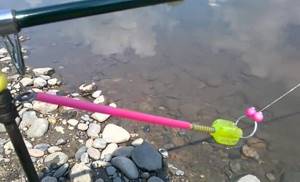
The pendulum controller consists of a wire rod with loops located at right angles to it on the opposite ends of the sides. One of the sides of the device ends with a spherical weight-tip, most of which have a hole for mounting a firefly.
The principle of operation of the pendulum is based on suspending the product on a thread, by winding it through slots in wire loops onto the tackle cord between the reel and the first winding ring. The tip, in a calm state, forms a slack in the thread, and a bite aligns the position of the rod, straightening the trajectory caused by the sagging, which is clearly noticeable when observed. Fishing at night is done with an activated firefly inserted into the hole in the tip.
Float
In feeder fishing, floats are rarely used in equipment and, basically, this technique is suitable for fishing in still waters in small areas, closed ponds and quiet backwaters. Any wind loads and increasing distance range reduce the efficiency of visual signal transmission. Various materials with positive buoyancy in bright colors are suitable for the float. This can be either a foam or plastic product, or a wooden or even a device made from a goose feather.
The signaling device, made in the required shape and painted in a color that is clearly visible to the eye from long distances, is attached directly to the cord of the bottom tackle. The attachment location is determined by preliminary measurement of the depth, installing the float so that it remains on the surface of the water with the feeder lying on the bottom. The controller is fixed using silicone stoppers or nipple rubber. The moment of the bite is determined by the movement of the float or its complete absence.
Side bite alarm and quiver tip
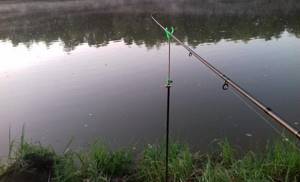
Experienced fishermen quite successfully use the quiver tip of the gear itself as a bite indicator, using its deviation to determine the moments necessary for hooking. But in some cases, caused by the inexperience of the fisherman, the low sensitivity of the rod tip, the so-called oakiness of the material, and the tenderness of fish bites, a method of installing an additional side nod is used.
The easiest way to make a homemade nod-type bite alarm is from springy wire or a thin strip of elastic steel. At the end of the nod, a hole is made to pull the main thread through it, securing the main body of the device in the upper part of the rod, using adhesive tape or electrical tape familiar to every average person. The nods are highly sensitive to any line tension, which increases the effectiveness of bottom fishing by timely hooking even carefully pecked fish.
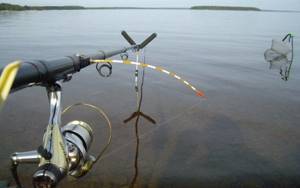
Swinger
A swinger is a fairly effective and convenient indicator for feeder fishing that you can make yourself. The measure of cord tension adjustment is made by shifting the center of gravity of the sliding load on the wire axis of the product. Fixation of the thread in the device is carried out by a special device, the working body of the swinger or a float with a line clamp. The free end of the lever is attached to the rod post. The fisherman, moving the load along the axis of the lever, adjusts the sensitivity.
Important! The further the weight is from the float, the more sensitive the alarm.
A homemade swinger can be assembled right on the shore of a pond. To do this, you will need a cut neck from a plastic bottle, onto which plugs with holes prepared in advance in their centers are screwed on both sides along the thread. This is what the cargo chamber will look like when filled with sand or earth. The lever will require a wire on which a load is strung. A wire of a smaller diameter is suitable for installing the adjustable mustache of the line holder. It remains to connect the free part of the lever with the first flyer, which holds the rod horizontally together with the second stand. The connection method should allow the lever to move freely vertically, for which you will need to articulate two elements by placing them on a common axis. Having adjusted the tension of the thread fixed by the mustache with a weight, you can safely start fishing.
Transportation and storage of alarms
If you buy alarms as a set, you will receive a convenient storage case for free. If you buy alarms separately, then you should think about where you will store them. An alternative is to leave them on the buzz bars and put them in the buzz bar storage bag. There is also a pocket for mechanical alarms. It is better to take good care of this, because the protective case in which the alarms are sold can rather be regarded as external protection. Under serious loads, it is unlikely to save.
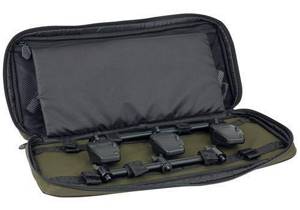
Which bite alarm is best to choose when fishing for carp?
Experienced carp anglers most often use several alarms of different types at the same time - both mechanical and electronic. The need for an electronic detector is determined, first of all, by the duration of carp fishing and the actual wait for a bite.
While a mechanical one can sometimes serve other than its intended purpose. When fishing for carp, the sinker is often mounted in a blind way in the hope that the fish will hook itself. In this case, a heavy mechanical device will act in a non-standard role as a line tension regulator.
The most popular bite alarms for carp fishing
Barracuda T5
Inexpensive version of the device. It has 4 buttons that respectively regulate: signal volume and tone, sensitivity, as well as turning the device on/off. The body is rubberized, the power supply is crown. When biting, in addition to the sound signal, a light signal (bright flashing) is given.
Delkim
Delkim alarms are equipped with a pager with the ability to vibrate about a bite; in addition, they are positioned as having a unique vibration transmitter for the tip of the rod and its equipment.
Some models, among other things, have the function of a digital FM transmitter with an anti-theft alarm and communication quality test. The ability to turn off the night light, monitor battery charge, adjust the brightness of the light signal, and audio output are also not found in all modifications.
Kosadaka T4
The simplest model of the device. Turning on/off is done by turning the volume control all the way. In addition to adjusting the volume, you can adjust the tone of the signal. The device has a waterproof housing and a protective case is included in the kit.
CarpProFlash
This alarm differs from the previous described models in that it allows you to connect a swinger, which is especially valuable for carp fishing. In addition, it is equipped with an acoustic alarm, memory of the previous bite, adjustment of the volume and tone of the sound signal, and a delay in the lighting of the indicators. The color of the light signal can be changed (4 light options). The device is enclosed in a waterproof housing and is powered by the crown.
Winner
Push-button signaling device, powered by two 1.5-volt batteries. Equipped with functions for adjusting volume, tone, sensitivity, and memory of the previous bite. There is a connector for connecting a swinger, the body is waterproof.
EOSC-9004
This set includes 4 alarms, each equipped with individual volume, tone and sensitivity controls, 1 walkie-talkie and a case for storage and transportation. The radius within which the signal operates is 200 m. There is a light indication and a connector for connecting a swinger.
FOX
The alarms of this company are equipped with a wide range of functions, various combinations of which are presented in each specific model:
- the ability of a light indicator to notify the fisherman by means of flashing or constant illumination about the direction of movement of the pecked fish - from the shore or to the shore;
- the ability to set a code for your alarms to avoid erroneous signal transmission to other people's pagers;
- night lighting;
- connector for connecting a swinger or transmitter;
- pager distance test;
- and a number of other standard functions inherent in an electronic bite detection device.
In conclusion, we note once again that when fishing for carp, the best option would be to use two types of signaling devices simultaneously, mechanical and electronic. And the choice of the model of this device depends, first of all, on the individual requirements of a particular fisherman, as well as on his financial capabilities.

